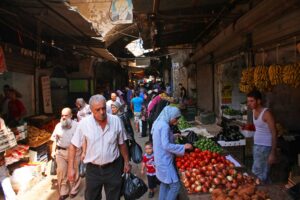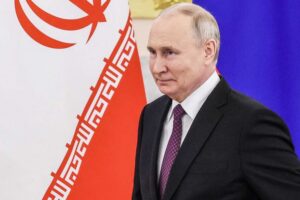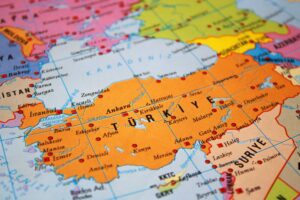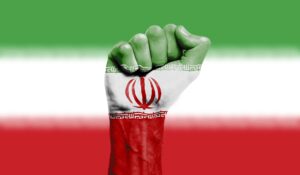The article is an extract from a broader research project on “Transparency Saves Lives: Ensuring Accountability in Reconstruction and Reform Efforts in Lebanon.”
On August 4, 2020, a massive explosion at the Port of Beirut (PoB) triggered a devastating humanitarian disaster in Lebanon at a time when the country was already coping with one of the largest economic and financial meltdowns in modern history. The explosion, one of the largest of its kind ever recorded, caused more than 200 deaths and over 6,500 injuries; the consequent property damage left more than 300,000 homeless, inflicting damages costing around 3.8 to 4.6 billion USD, and losses estimated between 2.9 and 3.5 billion USD.[i] [ii] The magnitude and devastation of the blast coupled with the rising risk of heightened social and political unrest created an emergency situation that drew in immediate international and regional humanitarian and reconstruction relief, as well as recovery and reconstruction assistance.
The response to the PoB explosion had to factor in the deficit of trust and confidence in the government and public state institutions, which had been undermined by decades of pervasive corruption, mismanagement, and notably, state authorities’ negligence in preventing and responding to the blast itself. This dynamic necessitated a response that could simultaneously meet the urgent needs of those who were most affected by the explosion and restore confidence in state institutions all the while safeguarding against corruption and mismanagement. Indeed, the influx of aid and assistance following the immediate aftermath of the blast amplified concerns of these funds being lost to mismanagement or corruption and engendered questions on the state of transparency, efficiency, and accountability in the relief response.[iii]
Corruption and mismanagement continue to be key drivers of public mistrust that adversely impact the design, coordination, and implementation of disaster relief efforts.
At the heart of the dysfunction in the PoB response is a critical gap in coordination between the key stakeholders involved. Corruption and mismanagement continue to be key drivers of public mistrust that adversely impact the design, coordination, and implementation of disaster relief efforts.[iv] The central emphasis on effective coordination—or, in the case of the PoB blast response, the lack thereof—marks a particular focal point for strengthening ongoing relief efforts in Beirut and informing lessons learned for improving transparency, accountability, and efficiency in disaster relief and recovery responses in fragile contexts suffering from endemic corruption and mismanagement response.[v] [vi] [vii]
Emergency Response Amidst Concurrent Crises
On August 9, five days after the PoB blast, an international support conference pledged almost 298 million USD in immediate relief aid and the EU set its mapping system to support Lebanon to assess the damage and plan for reconstruction. Early on, public and donor concerns about aid and funds being lost to corruption or mismanagement presented a challenge for how to best coordinate and deliver aid, particularly in such an emergency context. To restore the trust of its citizens, foreign actors pressed the Lebanese government and state institutions to implement significant reforms in the areas of transparency and accountability.[viii] After all, a deeper, more pervasive crisis of widespread corruption, poor management, and impunity was at the root of the explosion and the greater political and economic catastrophe.[ix] [x] [xi] In addition, due to the major discontent of the Lebanese people towards their government, many Lebanese were demanding that money and aid in the form of food, medical care, and housing be channeled only through trusted local organizations. Skepticism towards governmental stakeholders and the gaps left by their large absence in the emergency response, put Civil Society Organizations (CSOs) and Non-Governmental Organizations (NGOs) at the forefront of recovery and reconstruction efforts.
The recovery process, therefore, consisted of a milieu involving governmental agencies and public institutions, CSOs, the private sector, and international donors. Yet, nearly three years later, questions about the transparency, efficiency, and accountability of international assistance related to the PoB explosion persist with claims that millions of dollars have been misused or wasted due to corruption. Yet, these questions generally overlook the impact of effective or ineffective coordination on the PoB explosion response.
The Impact of Poor Coordination on the Port of Beirut Blast Response
There were significant shortcomings in the areas of aid relevance, efficiency, coordination, and fairness.
Despite the efforts of NGOs, the private sector (individual initiatives), and the Lebanese Armed Forces (LAF) to ease the suffering of PoB blast victims, there were significant shortcomings in the areas of aid relevance, efficiency, coordination, and fairness. At the heart of these challenges were serious gaps in internal and external coordination strategies and capacities. The lack of a proper coordinating system was emphasized by all respondents interviewed in Lebanon. During the aid disbursement process, and as the need arose, certain aid providers collaborated to refer beneficiaries who required assistance for services that they did not provide. However, all coordination activities were carried out on an individual basis or through limited coalitions of NGOs with shared objectives. Other types of coordination processes emerged, such as those implemented by UNOCHA and the Lebanon Reform, Recovery, and Reconstruction Framework (3RF), which were designed as collaborative processes involving the government, civil society, the private sector, and development partners.[xii]
Internal Coordination
The Lebanese Red Cross (LRC) developed an internal cash coordination group to increase efficiency. The Disaster Management Sector (DMS) and other relevant sectors in LRC, the International Committee of the Red Cross (ICRC), the International Federation of the Red Cross and Red Crescent Societies (IFRC), and Partner National Societies were all represented in the group. The group was used for information sharing as well as actual coordination. The LAF also attempted to help with coordination, particularly in organizing reconstruction operations by separating the damaged districts into six zones (K, O, L, M, N, P) and allocating portions inside those zones to various NGOs. In addition, the LAF performed geo-mapping, with the Internal Security Forces (ISF) also continuing to play a role post the blast. Due to a lack of coordination and general inadequacies, both the LAF and the ISF were conducting damage assessment exercises, resulting in a duplication of effort. Moreover, according to key informants, the affected community was largely unaware of each entity’s role, which added to the confusion and disorder.
External coordination
Initially, the LRC’s coordination with external players was strong as they led the Multi-Sectoral Needs Assessment (MSNA) in collaboration with UNHCR and UNOCHA. Yet, the LRC soon realized that it lacked the necessary capacity to lead the coordination and that this was complicated in terms of its role as an auxiliary to the government. External parties expressed a desire for the LRC to play a larger role in coordinating humanitarian assistance with the Lebanese Government and the LAF’s response. Furthermore, there were discrepancies in the perception around the LRC’s participation in coordination forums, where the LRC essentially felt that coordination had been done to the extent that it was beneficial and necessary. In contrast, external KIs reported a gap in the LRC’s participation in coordination structures. The latter’s perception may be related to concerns around the LRC sending different representatives to each coordination meeting and as a result not being able to assume the expected role in those meetings.
One of these coordinating platforms where the LRC may have played a stronger role was the Cash Task Force (CTF). They chose not to attend CTF meetings because they felt that talks were constantly focused solely on the topic of dollarizing cash assistance, whereas the LRC had reached a definite decision far earlier in the process. Additionally, CTF meetings often had more than 50 actors participating, which for the LRC, made the meeting agendas and discussions even less relevant. The key interviewees indicated that those coordination efforts didn’t lead to actionable plans.[xiii] [xiv] A major drawback to the absence of a national crisis management team and the absence of a national coordination unit was the emergence of numerous NGOs that were visible in the field, yet had no previous experience dealing with disasters. As a result, several of these NGOs conducted assessments but failed to distribute; others set up hotlines but never answered or were no longer reachable. Many beneficiaries were left not knowing whom to trust or whom to talk to. Furthermore, the large number of NGOs generated widespread confusion. In turn, the combination of these factors undermined the credibility of non-governmental organizations while adding to the general state of disorientation and disorder.
Challenges, Implications and Lessons Learned
The period between the blast and the humanitarian intervention was marked by skyrocketing inflation, rapid depreciation of the currency, and consequently a substantial loss in purchasing power.
According to the interviewees, one of the most visible impacts of this poor coordination was that many beneficiaries received food donations that were not actually needed or in numbers that surpassed their needs, and effectively there was duplication of work between aid provided by NGOs and the Lebanese Army.[xv] [xvi] [xvii] Furthermore, several recipients stated that the assistance was insufficient, particularly those receiving cash and renovation assistance. However, it is important to emphasize that the period between the blast and the humanitarian intervention was marked by skyrocketing inflation, rapid depreciation of the currency, and consequently a substantial loss in purchasing power. As a result, the inadequacy of aid may be attributed to the country’s severe intertwined economic, financial, and political crises.
To be clear, overall, the PoB post-explosion relief from international and domestic parties did help to lessen the adverse impacts of the blast; nevertheless, despite the reconstruction projects that various NGOs carried out, it fell short of the reform phase. The lack of a strategy hampered the effectiveness of the aid and caused the massive inflow of funds to be misapplied, which prevented many Lebanese from observing its effects in the afflicted areas. The absence of a Central Command Unit, a national coordination organization that would establish a clear plan of roles and actions, resulted in many problems such as chaos in the aid disbursement processes, duplicity of work and redundancies among aid providers, and the emergence of pop-up mushroom NGOs that gathered input and information from the populace and then disappeared. This dynamic only added to the public’s deepening mistrust of both the government and NGOs.
According to our findings, and relevant to the larger study of the relationship between disaster response and trust, we categorized three main levels of lack of trust.[xviii] The first is the international community’s lack of trust in the Lebanese government. The second is competition among local non-governmental organizations and the consequent deepening mistrust between them. The third is people’s skepticism and heightened lack of confidence in the government and non-governmental organizations. Underlying all three levels of (mis)trust is the absence of effective coordination to foster better information sharing, accountability, and overall transparency needed to foster and sustain trust-building.
Poor coordination also impacted the aid distribution process. Notably, the aid disbursement process was not solely driven by the ‘Do No Harm’ principles (impartiality, humanity, neutrality, and independence). In practice, competing strategic, political, and economic priorities interfered with the aid disbursement process and resulted in some biases in aid distribution and the duplicity of aid. Relatedly, the imbalanced presence and activity of NGOs, with some regions seeing multiple NGOs offering assistance, and others being left without significant support, further demonstrated the consequences of poor coordination on aid distribution.
There were also notable disparities among governmental actors. The ISF, LAF, and diplomats from the Lebanese government were present, but the municipality’s role was completely absent. Many international stakeholders preferred the government to stay out of the aid distribution process, but even if this were not the case, the government lacked the funds, power, and trust required to take action. In response to the clear leadership gap, a common theme in many interviews was the need for a national organization to oversee the coordination process to ensure accurate and regular aid reporting and compliance to attain transparency and accountability towards the donors and the wider public, particularly those directly affected.
Several sets of challenges impeded the relief efforts of both NGOs and the government and can serve as generalizable lessons learned. First, there was a clear lack of national coordination. In turn, the absence of a national risk management plan and the government’s inadequate caregiving presence in the wake of a national tragedy added to the challenge of restoring community trust. This fostered a chaotic environment with poor coordination between aid providers and at times competition between them. Amidst this anarchic context, some NGOs that were pressed to fill the voids left by the government lacked the needed expertise or the capacity to manage large funds. Others suffered from minimal or no training in working in crisis settings. There were also limited incentives for donors and aid providers to report on common platforms, particularly in cases where they had their own.
Conclusions and Policy Recommendations
There is an urgent need to establish a national crisis management unit tasked with containing crises and coordinating any assistance intervention process, including but not limited to beneficiaries, aid providers, and donor databases, in order to avoid aid duplication and improve efficiency. This unit must be well-known among local and international actors, as well as reliable and reputable, in order to compel all parties to follow and respect the rules, regulations, coordination terms, as well as reporting terms. A public platform of vetted and credible relief providers, types of aid, and hotlines must urgently be developed, alongside the codification of a specified list of aid providers that contains information about various types of aid as well as public hotlines. Aid providers require an incentive to collaborate and adhere to humanitarian needs; thus, it is critical to develop this incentivizing mechanism. This emphasizes the need for an aid tracker, which allows all aid providers as well as the general public to monitor aid in order to make informed decisions, foster trust in the aid process, and achieve transparency. Having a single source for databases and identifiers could help to broaden the reach of the process and make it more inclusive.
[i] Abouzeid, M., Habib, R. R., Jabbour, S., Mokdad, A. H., & Nuwayhid, I. (2020). Lebanon’s humanitarian crisis escalates after the Beirut blast. The Lancet, 396(10260), p. 1380-1382.
[ii] World Bank Group (2020). Beirut rapid damage and needs assessment (RDNA) – August 2020. Available at: https://www.worldbank.org/en/country/lebanon/publication/beirut-rapid-damage-and-needs-assessment-rdna—august-2020 (Accessed: 18 June 2023).
[iii] Zafar, S., Rahman, I. U., & Ammara, S. (2023). Disasters and corruption: An Empirical Analysis of 16 countries from Asia and the Middle East. International Journal of Disaster Risk Reduction, 90, 103678.
[iv] Weng, W. W., Woo, C. K., Cheng, Y. S., Ho, T., & Horowitz, I. (2015). Public trust and corruption perception: disaster relief. Applied Economics, 47(46), p. 4967-4981.
[v] Fuchs, A., Nunnenkamp, P., & Öhler, H. (2015). Why donors of foreign aid do not coordinate: The role of competition for export markets and political support. The World Economy, 38(2), p. 255-285.
[vi] Bigsten, Arne and Tengstam, Sven, (2015), International Coordination and the Effectiveness of Aid, World Development, 69, issue C, p. 75-85.
[vii] Aldasoro, I., Nunnenkamp, P., & Thiele, R. (2010). Less aid proliferation and more donor coordination? The wide gap between words and deeds. Journal of international development, 22(7), p. 920-940.
[viii] World Bank Group, United Nations, & European Union. (2020). Lebanon Reform, Recovery, and Reconstruction Framework. http://hdl.handle.net/10986/34869 (Accessed: 23 June 2022).
[ix] Al-Hajj, S., Dhaini, H. R., Mondello, S., Kaafarani, H., Kobeissy, F., & DePalma, R. G. (2021). Beirut ammonium nitrate blast: analysis, review, and recommendations. Frontiers in Public Health, 9, 657996.
[x] Abouzeid, M., Habib, R. R., Jabbour, S., Mokdad, A. H., & Nuwayhid, I. (2020). Lebanon’s humanitarian crisis escalates after the Beirut blast. The Lancet, 396(10260), p. 1380-1382.
[xi] El Sayed, M. J. (2022). Beirut ammonium nitrate explosion: a man-made disaster in times of the COVID-19 pandemic. Disaster medicine and public health preparedness, 16(3), p. 1203-1207.
[xii] World Bank Group (2020). Beirut rapid damage and needs assessment (RDNA) – August 2020. Available at: https://www.worldbank.org/en/country/lebanon/publication/beirut-rapid-damage-and-needs-assessment-rdna—august-2020 (Accessed: 18 June 2023).
[xiii] Tabsh, G., Sidani, O. and Abi Younes, O. (2022). “Ensuring Accountability in Reconstruction and Reform Efforts in Lebanon: Key Informant Interviews Findings Report,” June 2022.
[xiv] Tabsh, G., Sidani, O. and Abi Younes, O. (2022). “Ensuring Accountability in Reconstruction and Reform Efforts in Lebanon: Phase Two Key Informant Interviews Findings Report,” December 2022.
[xv] Tabsh, G., Sidani, O. and Abi Younes, O. (2022). “Ensuring Accountability in Reconstruction and Reform Efforts in Lebanon: Field Survey Findings Report,” June 2022.
[xvi] Tabsh, G., Sidani, O. and Abi Younes, O. (2022). “Ensuring Accountability in Reconstruction and Reform Efforts in Lebanon: Phase Two Field Survey Findings Report,” December 2022.
[xvii] Tabsh, G., Sidani, O. and Abi Younes, O. (2023). “Ensuring Accountability in Reconstruction and Reform Efforts in Lebanon: Phase Three Field Survey Findings Report,” April, 2023.
[xviii] Tabsh, G., Sidani, Ol and Abi Younes, O. (2022). “Ensuring Accountability in Reconstruction and Reform Efforts in Lebanon: Synthesis Report,” July 2022.
















